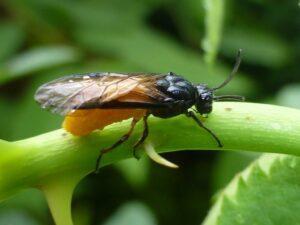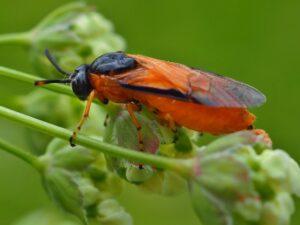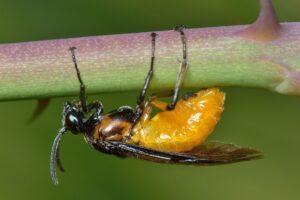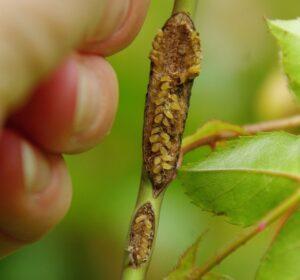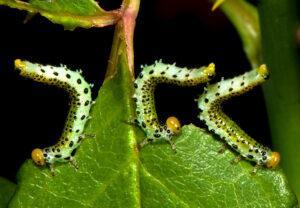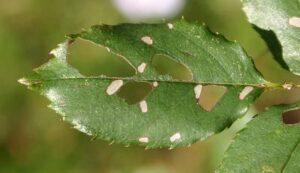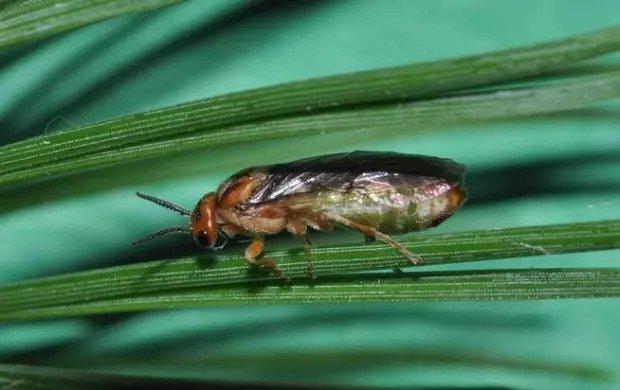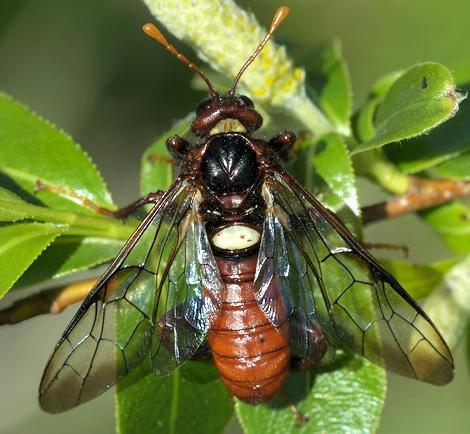Rose Sawfly (Arge ochropus)
Updated on
17/11/2022The rose sawfly of the Argidae family is a noted garden pest in Eurasia, where it is a native. Populations of the rose sawfly have also been spotted in the northeastern parts of the United States and eastern Canada, where it has gained the status of being an invasive species. It often resembles a fly in appearance, and most of the damage is done by the larvae and not adults, mainly to the rose bushes, as evident from its name.
Scientific Classification
- Class:Insecta
- Order:Hymenoptera
- Family:Argidae
- Genus:Arge
- Species:A. ochropus
Conservation Status
Description
The adults reaching a length of 7-10 mm are primarily in season between April and May. Their thorax and head appear black, while the wings and abdomen are of a reddish-orange coloration. They are closely similar to another sawfly species, the turnip sawfly, though the main difference lies in their antennae. The rose sawfly’s antenna has three sections, the third highly elongated. On the other hand, the turnip sawfly has 10-11 sections in its antenna.
Distribution: Native – Asia Minor, Europe, Turkmenistan, Caucasus, Northern Iran, and Western Siberia Invasive – Eastern Canada, northeastern United States
Habitat: Gardens and hedgerows, especially in areas of rose plantations
Do They Bite/Sting: No
Lifespan: 2 months – 2 years
Predators: Predaceous beetles, insectivorous birds, small mammals, predaceous beetles, viral and fungal diseases
Behavior and Characteristics
Diet
The adult’s diet includes the pollen and nectar of hogweed, wild angelica, and tansy. The larva feeds on several rose species like the burnet rose and dog rose.
Getting Rid of a Rose Sawfly
Applying systematic insecticides to the rose bushes during early or mid-spring is one of the effective control measures. Another manner of checking infestation is by taking away the host plants the adults feed on. Like, the common tansy’s pollen and nectar are the adult’s preferred food. So gardeners having rose plantations would perhaps refrain from growing common tansy in the vicinity.
Source
naturespot.org.uk, biolib.cz, thespruce.com, flickr.com, walterreeves.com




